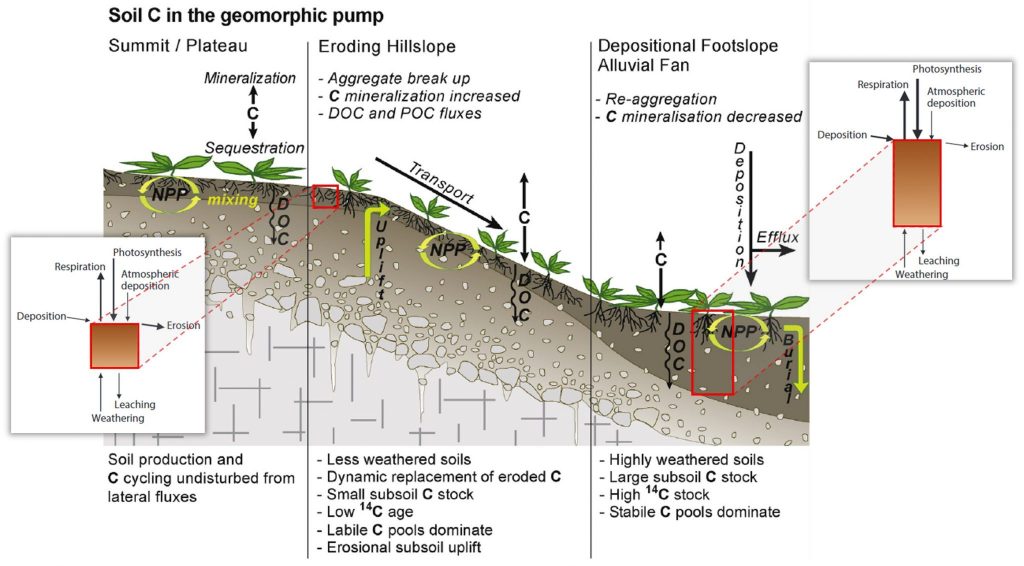
The topography of a landscape and its evolution are key features of the Earth’s surface, as they regulate the spatial distribution of water and energy resources, which are the main drivers of vegetation and nutrient dynamics as well as soil organic matter distribution. This is particularly relevant in high-relief areas, where the interaction of local (e.g. elevation, slope, aspect) and non-local (e.g. drainage area) topographic features with climate, parent material, and biota leads to the establishment of highly heterogeneous landscapes. In these sensitive and vulnerable environments, even small changes in soil carbon storage and nutrient availability may have profound impacts on the overall climate and vegetation distribution. Despite the importance of mountain soils as hotspots of land cover and climatic changes and their crucial role in providing multiple ecosystem services – from carbon storage to natural hazard protection and water regulation – our ability to quantify and predict the spatial distribution of lateral carbon fluxes and carbon stocks across these highly heterogeneous landscapes is still limited, thus hindering informed land management interventions and conservation practices. The main limitations stem from the prevalence of largely decoupled monitoring and modeling approaches, which fail to concurrently account for coupled geomorphic, pedogenic, hydrological, biochemical, and ecological processes, as well as the lack of adequate frameworks describing the links among topography, water and energy balances, and soil biogeochemical and erosion processes.
To address this knowledge gap, the proposed project aims to evaluate soil carbon stocks and lateral fluxes in complex alpine landscapes affected by soil erosion and gain a mechanistic understanding of the role of interactions between topography, climate, and geology in shaping soil carbon stocks and lateral transport. To achieve these goals, the research proposed here will entail i) monitoring campaigns in two Alpine catchments with contrasting geological backgrounds, ii) detailed high-resolution numerical modeling of coupled ecohydrological, biogeochemical, and geomorphological processes, iii) synthesis of monitoring and modeling data to link topographic features to target biogeochemical soil variables for the prediction of spatial patterns of soil carbon.
By combining novel high-resolution modeling with a rigorous monitoring campaign, the proposed project will provide quantitative insights into the role of geomorphic features and soil properties in shaping local and catchment scale soil carbon distribution in topographically complex landscapes. The predictive framework linking ecohydrological, soil biogeochemical, and geomorphological processes will be instrumental for assessing the impact of land cover and climatic changes on alpine soil carbon storage and lateral carbon fluxes and constraining future soil ecosystem services that relate to the carbon cycle.
Project duration | Mar. 2025 – Feb. 2029
People | Taiqi Lian, Frédéric Lardet, Concetta D’Amato
Funding | Swiss National Science Foundation (SNSF)
Collaborators | Prof. S. Doetterl (Soil Resources Group, ETH Zürich), Prof. S. Lane (AlpWISE, University of Lausanne), Prof. N. Peleg (Hydrometeorology and Surface Processes Group, University of Lausanne), Dr. K. Di Bella Meusburger (WSL)

Related presentations and publications:
- Bonetti, S., Lian, T., and Fatichi, S. (2024), Assessing spatial patterns of carbon and nutrient dynamics in catchments of complex topography, AGU Fall Meeting 2024, Washington DC, USA, 9–13 Dec. 2024, H41C-04.